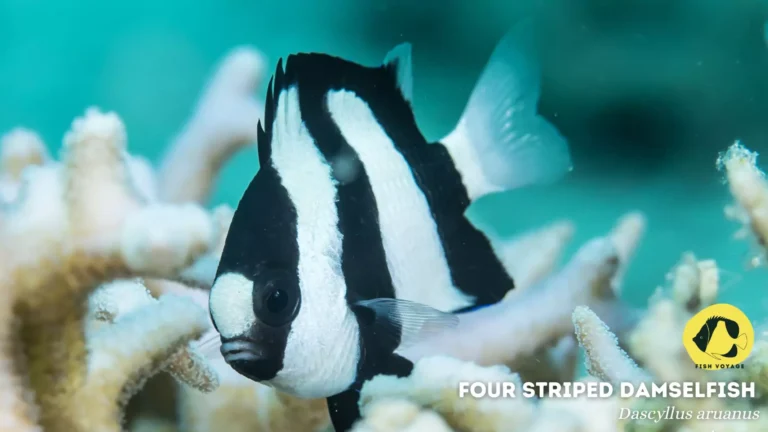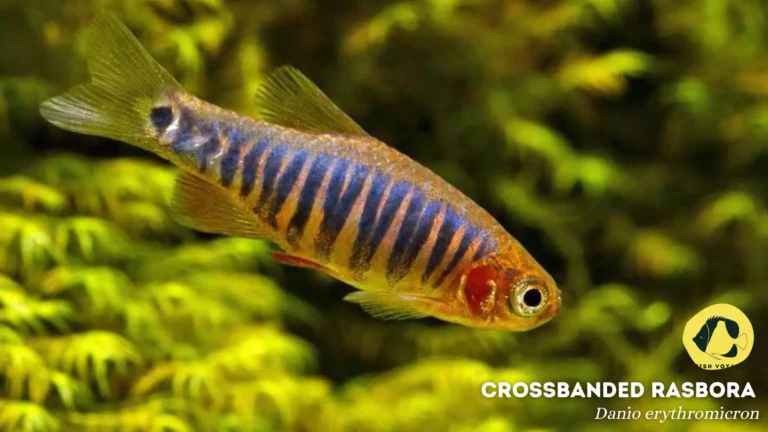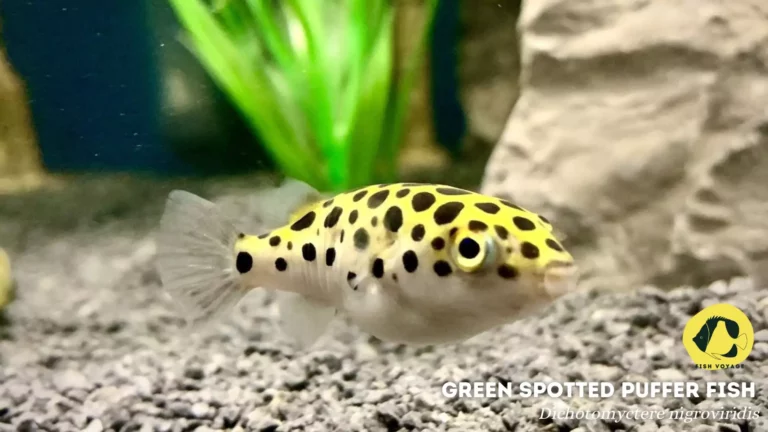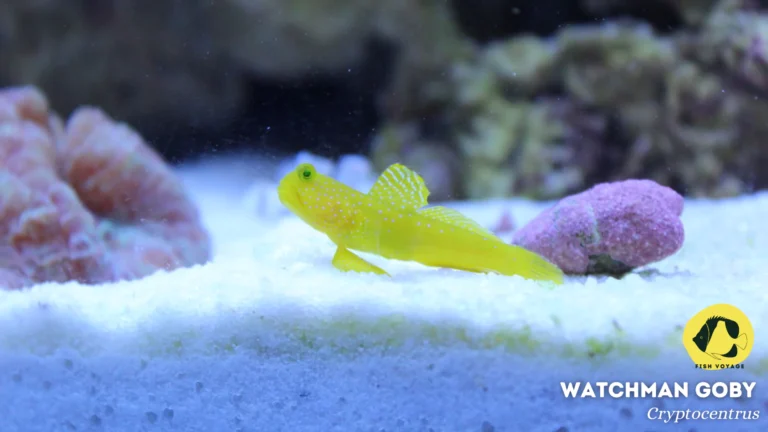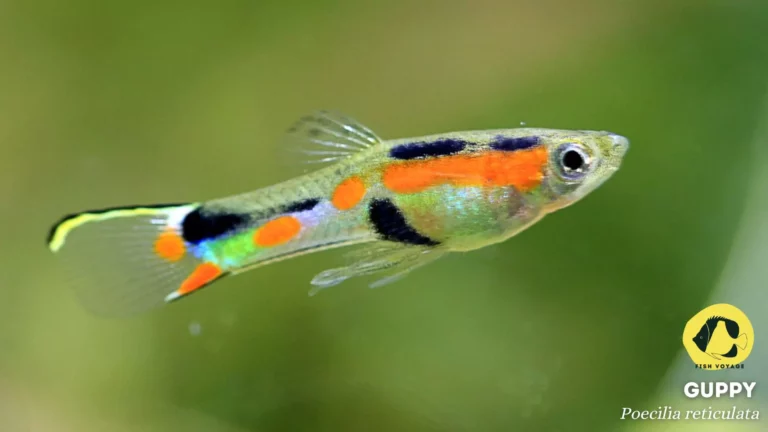Emerald Dwarf Rasbora Tank Size – A Guide

Brief Overview of the Emerald Dwarf Rasbora
The Emerald Dwarf Rasbora, scientifically known as Celestichthys erythromicron, captivates aquarists with its vibrant colors and diminutive size. Originating from the slow-moving waters of Southeast Asia, these small freshwater fish are prized for their striking emerald-green hues and distinctive fin markings. With a maximum size of around 0.8 inches (2 cm), these Rasboras are a delightful addition to community aquariums, bringing a splash of color and lively energy.
Providing an Appropriate Tank Size for Optimal Health
Ensuring the well-being of Emerald Dwarf Rasboras goes beyond the aesthetics of an aquarium. The foundation of their health lies in the adequacy of their living space. This blog explores the critical connection between tank size and the optimal health of these fascinating creatures. From their natural behavior to the impact of confined spaces, understanding the significance of an appropriately sized tank is pivotal for creating a thriving environment that mirrors their native habitats. As we delve into the intricacies of tank size recommendations, the objective is to foster an environment where Emerald Dwarf Rasboras can flourish, showcasing their natural behaviors and vibrant colors.
Understanding Emerald Dwarf Rasbora
Physical Characteristics
- Size and Structure: Emerald Dwarf Rasboras boast a petite size, reaching up to 0.8 inches (2 cm). Their slender bodies are complemented by vibrant emerald-green coloring, creating a visually striking appearance.
- Distinctive Fins: These Rasboras are characterized by intricate fin patterns, including a prominent dorsal fin and a tail fin adorned with a delicate touch of color. Understanding these distinct physical features enhances the overall appreciation for this captivating species.
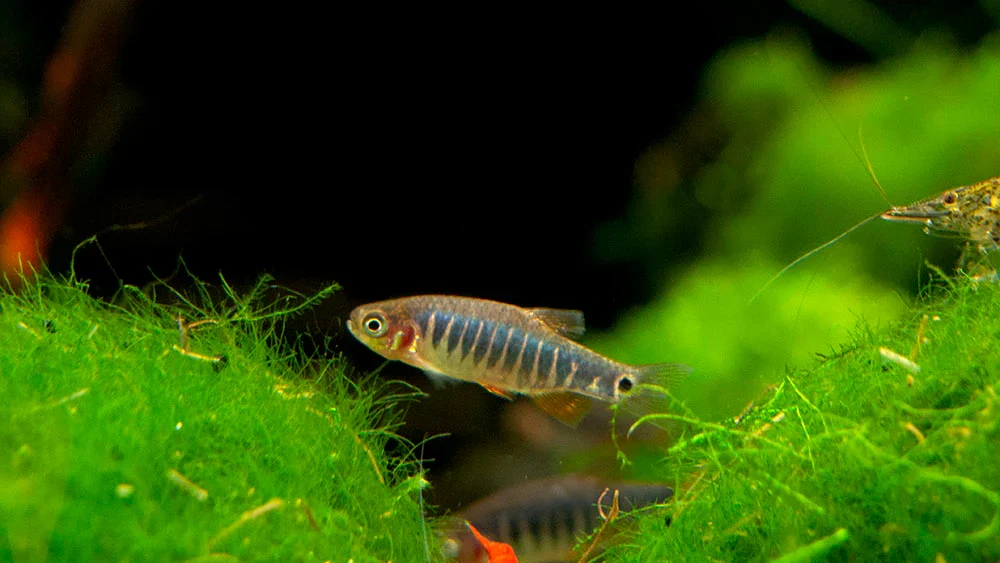
Behavioral Traits
- Schooling Behavior: In their natural habitat, Emerald Dwarf Rasboras are social creatures that thrive in the company of their own kind. Observing their schooling behavior in an aquarium setting reveals a harmonious display of synchronized movements, emphasizing their need for companionship.
- Active Swimmers: Known for their energetic nature, these Rasboras are active swimmers, exploring different levels of the water column. Their lively behavior adds a dynamic element to the aquarium, creating an engaging spectacle for enthusiasts.
Ideal Habitat Conditions
- Water Parameters: Replicating their native environment, they maintain a pH level between 6.0 and 7.0 and a temperature range of 73-79°F (23-26°C). Consistency in water parameters is crucial for the health and vitality of Emerald Dwarf Rasboras.
- Aquascape Elements: Provide ample hiding spots among live plants, driftwood, and rocks, mimicking the vegetation-rich environments of Southeast Asian waters. A well-structured aquascape offers security and comfort, promoting natural behaviors.
- Low to Moderate Lighting: Given their natural habitat in dimly lit waters, opt for low to moderate lighting in the aquarium. This not only aligns with their preferences but also reduces stress, contributing to their overall well-being.
By comprehensively understanding the physical, behavioral, and habitat aspects of Emerald Dwarf Rasboras, aquarists can curate an environment that not only meets their specific needs but also allows these captivating fish to thrive in captivity.
Factors Influencing Tank Size
Species-Specific Requirements
- Individual Space Needs: Emerald Dwarf Rasboras, though small, thrive when provided with adequate swimming space. The tank size should accommodate their size and allow each fish to express its natural behaviors without feeling confined.
- Compatibility with Other Species: Understanding the compatibility of Emerald Dwarf Rasboras with other fish species is crucial. A well-sized tank minimizes territorial disputes and promotes a harmonious community, preventing stress-related issues.
Consideration of the Natural Habitat
- Mimicking Southeast Asian Waters: The tank’s dimensions should reflect the slow-moving waters of Southeast Asia, where Emerald Dwarf Rasboras originate. A well-thought-out aquascape with appropriate plants, rocks, and driftwood creates an environment reminiscent of their native habitats.
- Water Flow and Filtration: Tailoring water flow to mirror the Rasboras’ natural habitat is essential. Gentle filtration systems and strategic placement of decor ensure a comfortable and stress-free living space for these fish.
Social Behavior and Group Dynamics
- Schooling Instinct: Recognizing the schooling nature of Emerald Dwarf Rasboras is vital. A larger tank allows for the formation of cohesive schools, satisfying their social instincts and promoting a visually appealing display within the aquarium.
- Hierarchy and Territorial Behavior: In a group, establishing a hierarchy is natural among Emerald Dwarf Rasboras. Sufficient space minimizes aggressive behavior and territorial disputes, fostering a balanced social dynamic.
- Breeding Conditions: If breeding is a consideration, providing extra space becomes even more critical. A well-sized tank with appropriate hiding spots encourages successful breeding behaviors and the survival of fry.
Understanding these factors and tailoring the tank size accordingly ensures that Emerald Dwarf Rasboras experience a habitat that aligns with their natural tendencies, leading to enhanced well-being and a flourishing aquatic community.
Determining the Right Tank Size
General Guidelines for Tank Dimensions
- Consider Adult Size: Anticipate the adult size of Emerald Dwarf Rasboras, typically around 0.8 inches (2 cm). A general rule is to provide at least 5 gallons of water for every adult Rasbora, ensuring ample swimming space and comfort.
- Horizontal Space Matters: These active swimmers benefit from longer tanks rather than taller ones. Opt for tanks with more horizontal space to accommodate their natural swimming behaviors and promote a visually appealing aquarium layout.
Gallons per Fish Ratio
- Balancing Quantity and Quality: Aim for a ratio of one gallon of water per Emerald Dwarf Rasbora. This ratio not only considers the physical space each fish needs but also helps maintain water quality by diluting waste and promoting a healthier environment.
- Adjusting for Group Size: When keeping a group of Rasboras, calculate the total gallons needed based on the number of fish. This accounts for their schooling behavior, ensuring they feel secure and reducing stress in a larger community.
The Impact of Decorations and Plants on Available Space
- Creating Functional Spaces: Decorations and plants enhance the aesthetic appeal of the tank but should not compromise swimming space. Arrange decor strategically, leaving open areas for swimming and ensuring that hiding spots don’t overcrowd the environment.
- Consideration for Breeding Spaces: If breeding is a goal, incorporating plants and structures that serve as hiding places is essential. However, strike a balance to avoid overcrowding, as this can lead to stress and hinder successful breeding.
- Maintenance Accessibility: While decorating, keep in mind the ease of maintenance. Ensuring that decorations don’t obstruct access for cleaning and water changes contributes to the overall health of the aquarium.
By adhering to these guidelines for tank dimensions, considering the gallons per fish ratio, and thoughtfully arranging decorations, aquarists can provide an environment that not only meets the specific needs of Emerald Dwarf Rasboras but also enhances the overall aesthetics of the aquarium.
Minimum Tank Size Recommendations
Guidelines for a Single Emerald Dwarf Rasbora
- Considerate Space: Allocate a minimum of 5 gallons for a single Emerald Dwarf Rasbora. While these fish are small, providing ample swimming space is essential for their well-being and to showcase their vibrant colors.
- Individual Comfort: A well-sized tank for a single Rasbora ensures they can express natural behaviors without feeling confined. This promotes better health, reduces stress, and allows enthusiasts to appreciate the intricate details of these captivating fish.
Recommended Tank Size for a Small Group or Community
- Social Dynamics: For a small group of Emerald Dwarf Rasboras, a tank size of at least 10 gallons is recommended. This provides sufficient room for the Rasboras to school, exhibit natural behaviors, and establish a cohesive social dynamic.
- Community Considerations: If incorporating other compatible fish species, opt for a larger tank, such as 20 gallons or more. This accommodates the Rasboras’ schooling nature, minimizes territorial conflicts, and creates a harmonious aquatic community.
Considering Future Growth and Territorial Behavior
- Anticipate Growth: As Rasboras grow, consider upgrading to a larger tank to accommodate their increased size and activity levels. This proactive approach prevents stunted growth and ensures a comfortable living space for the fish.
- Territorial Considerations: When keeping multiple Rasboras, strategically arrange tank decor to create territorial boundaries. This minimizes aggression and provides designated spaces for each fish, contributing to a stress-free environment.
- Breeding Considerations: If breeding is a possibility, factor in additional space for spawning and fry. A well-sized tank with suitable hiding spots supports successful breeding behaviors and the survival of offspring.
By adhering to these minimum tank size recommendations, aquarists can create an environment that not only meets the specific needs of Emerald Dwarf Rasboras but also sets the stage for a visually stunning and harmonious aquatic community.
Potential Issues with Inadequate Tank Size
Behavioral Stress
- Restricted Natural Behaviors: In a cramped environment, Emerald Dwarf Rasboras may exhibit abnormal behaviors due to limited space. These stress-induced actions can include reduced swimming activity, increased hiding, or heightened aggression, negatively affecting their overall well-being.
- Impact on Social Dynamics: Inadequate space hinders the natural schooling behavior of these social fish. This can lead to increased stress levels, disrupt hierarchy establishment, and result in a less cohesive and harmonious community.
Health Concerns
- Diminished Immune System: A crowded tank elevates the risk of disease transmission and weakens the immune system of Emerald Dwarf Rasboras. Adequate space promotes better water quality and reduces the likelihood of pathogens spreading among the fish.
- Stunted Growth: Limited space impedes the growth potential of these fish. Stunted growth not only affects their visual appeal but can also lead to various health issues, making them more susceptible to illnesses and reducing their overall lifespan.
Impact on Breeding and Reproduction
- Failed Breeding Attempts: In a confined space, breeding pairs may struggle to find suitable locations for spawning, resulting in failed breeding attempts. Sufficient room with carefully placed breeding structures enhances the chances of successful reproduction.
- Survival of Fry: An overcrowded environment poses a threat to the survival of fry. Inadequate space limits hiding spots for newborns, making them vulnerable to predation and hindering the natural reproductive cycle of Emerald Dwarf Rasboras.
- Stress-Induced Reproductive Issues: Stress caused by insufficient space can lead to reproductive issues, including reduced egg production and increased chances of infertile eggs. An appropriately sized tank promotes a stress-free environment, fostering successful breeding behaviors.
Understanding the potential issues associated with inadequate tank size underscores the importance of providing a spacious and suitable habitat for Emerald Dwarf Rasboras. By addressing these concerns, aquarists can ensure the long-term health, vitality, and breeding success of these captivating freshwater fish.
Tips for Setting Up an Emerald Dwarf Rasbora Tank
Suitable Substrate and Water Parameters
- Selecting Substrate: Choose a fine-grained substrate to mimic the soft, sandy bottoms of Southeast Asian waters. This not only enhances the visual appeal of the tank but also allows Emerald Dwarf Rasboras to exhibit natural foraging behaviors.
- Maintaining Water Parameters: Aim for a pH level between 6.0 and 7.0 and a temperature range of 73-79°F (23-26°C). Consistent water parameters mirror their native habitat, promoting overall health and well-being.
Adequate Filtration and Water Flow
- Gentle Filtration: Install a gentle filtration system to avoid creating strong water currents that may stress the Rasboras. Adequate filtration ensures water quality, reducing the risk of disease and maintaining a healthy aquatic environment.
- Strategic Placement of Filtration: Position the filter outlet to provide gentle water flow without causing excessive disturbance. This ensures proper oxygenation without disrupting the calm, slow-moving conditions preferred by Emerald Dwarf Rasboras.
Creating Hiding Spots and Swimming Spaces
- Utilize Live Plants: Incorporate live plants like Java Moss, Anubias, and Cryptocoryne to create natural hiding spots and mimic the Rasboras’ native environment. Plants not only serve as shelters but also contribute to a visually appealing aquascape.
- Strategically Place Decorations: Position decorations like driftwood and rocks to create designated hiding spots and break up sightlines. This allows the Rasboras to retreat when needed and promotes a sense of security within the tank.
- Open Swimming Areas: Design the layout to include open spaces for swimming. Balancing hiding spots with open areas allows the Rasboras to showcase their natural behaviors, making the aquarium more dynamic and engaging.
By carefully considering substrate, water parameters, filtration, and the arrangement of decorations, aquarists can establish an Emerald Dwarf Rasbora tank that not only meets their specific needs but also provides a visually stunning and enriching environment for these captivating freshwater fish.
Monitoring and Adjusting Tank Size
Regular Observation of Fish Behavior
- Engage in Daily Observations: Regularly observe the behavior of your Emerald Dwarf Rasboras. Pay attention to swimming patterns, feeding habits, and interactions with tank mates. Daily observations provide insights into their well-being and help detect any signs of stress or discomfort.
- Document Changes: Keep a log of any changes in behavior. Note alterations in schooling dynamics, hiding patterns, or unusual behaviors. This documentation becomes a valuable tool for assessing the overall health of the Rasboras and the adequacy of their current tank size.
Indicators of an Overcrowded Tank
- Aggressive Behavior: Increased aggression among Rasboras may indicate crowding. Aggression can manifest as chasing, fin nipping, or territorial disputes. Identifying and addressing these behaviors promptly is crucial to maintaining a harmonious aquarium environment.
- Reduced Activity: If Rasboras become less active or show signs of stress, it could be a symptom of overcrowding. A well-sized tank allows them to express natural behaviors, and any deviation from their usual activity levels warrants attention and potential adjustments.
- Deteriorating Water Quality: Overcrowded tanks are prone to deteriorating water quality. Regularly test water parameters and observe for any spikes in ammonia, nitrite, or nitrate levels. Poor water quality negatively impacts the health of fish and necessitates a reassessment of tank size.
Adapting Tank Size as the Fish Grow
- Consider Growth Potential: As Emerald Dwarf Rasboras grow, reassess the tank size to accommodate their increased size and activity levels. Upgrading to a larger tank ensures they have ample space to thrive and express their natural behaviors without feeling constrained.
- Evaluate Population Dynamics: If additional fish are introduced to the aquarium, evaluate the impact on social dynamics and behavior. Monitor for signs of overcrowding and be prepared to adjust the tank size accordingly to maintain a balanced and stress-free community.
- Gradual Transitions: When upgrading or adjusting tank size, implement changes gradually. Sudden changes can stress the Rasboras, so allow them time to acclimate to their new environment. This approach supports a smoother transition and minimizes potential disruptions.
Regularly monitoring and adapting the tank size based on behavioral observations and indicators of overcrowding is essential for the well-being of Emerald Dwarf Rasboras. This proactive approach ensures a thriving and harmonious aquarium environment for these captivating freshwater fish.
Conclusion
Recap of Key Points
In navigating the intricacies of Emerald Dwarf Rasbora care, several key considerations emerge. From understanding their physical and behavioral traits to factors influencing the ideal tank size, aquarists must prioritize the creation of an environment that mirrors their natural habitat. By adhering to guidelines for tank dimensions, gallons per fish ratio, and strategic aquascaping, enthusiasts can establish a thriving community that showcases the beauty and vibrancy of these captivating freshwater fish.
Emphasis on the Importance of a Well-Sized Tank
As stewards of aquatic ecosystems, it is paramount to recognize that the size of the tank plays a pivotal role in the health and vitality of Emerald Dwarf Rasboras. Beyond the aesthetic appeal, a well-sized tank is the cornerstone of their well-being, influencing behavior, social dynamics, and overall quality of life. Providing ample space is not merely a suggestion; it is a commitment to fostering an environment where these remarkable fish can express their natural instincts, engage in social behaviors, and exhibit their stunning colors with grace.
Aquarists are encouraged to view the tank not just as a containment vessel but as a carefully curated habitat that reflects the needs and preferences of Emerald Dwarf Rasboras. By investing in the appropriate tank size, we not only honor the beauty of these aquatic companions but also contribute to their long-term health and happiness. As we cultivate our aquariums, let us remain steadfast in our dedication to providing the space and conditions that enable Emerald Dwarf Rasboras to flourish, creating a captivating underwater world for both enthusiasts and the fish themselves.
Additional Resources
Links to Reputable Forums
- Fishlore: Fishlore boasts an active forum with a dedicated section for Rasbora enthusiasts. Participate in discussions, seek advice, and connect with experienced hobbyists who share insights into successful Emerald Dwarf Rasbora care.
- PlantedTank: For those interested in creating lush planted environments for their Rasboras, the Planted Tank Forum offers a space to discuss plant choices, substrate options, and aquascaping techniques that complement the specific needs of Emerald Dwarf Rasboras.
Recommended Products for Setting Up an Ideal Tank
- Fluval Spec Aquarium Kit: Crafted with attention to detail, the Fluval Spec Aquarium Kit provides an elegant and functional home for Emerald Dwarf Rasboras. Its compact design and efficient filtration system make it an ideal choice for enthusiasts seeking a well-sized tank.
- Seachem Flourite Substrate: Enhance your tank’s aesthetics and cater to the Rasboras’ natural instincts with Seachem Flourite Substrate. Rich in nutrients, this substrate supports plant growth and creates a visually appealing underwater landscape.
- Aqueon QuietFlow LED Pro Aquarium Power Filter: Ensure optimal water quality with the Aqueon QuietFlow LED Pro Aquarium Power Filter. Its quiet operation, adjustable flow, and reliable filtration make it an excellent choice for maintaining a healthy environment for your Rasboras.
- API Freshwater Master Test Kit: Keep a close eye on water parameters with the API Freshwater Master Test Kit. Regular testing is crucial for maintaining the health of Emerald Dwarf Rasboras, and this comprehensive kit offers accurate results for essential parameters.
- Capetsma Aquascaping Tools Set: For those delving into aquascaping, a quality tool set is indispensable. This Aquascaping Tools Set provides precision for arranging plants and creating a well-structured environment for your Rasboras.
By exploring reputable forums and incorporating recommended products, aquarists can leverage the collective wisdom of the community and access quality resources to enhance their journey in caring for Emerald Dwarf Rasboras.
Frequently Asked Questions (FAQs)
1. What is the recommended tank size for Emerald Dwarf Rasboras?
The ideal tank size for Emerald Dwarf Rasboras is around 10 gallons for a small group. A larger tank, such as 20 gallons or more, is recommended for a community setup or if you plan to keep a larger number of Rasboras.
2. Can Emerald Dwarf Rasboras be kept in a nano tank?
While Emerald Dwarf Rasboras are small in size, it’s crucial to provide adequate swimming space. A nano tank of at least 5 gallons can house a small group, but larger tanks are preferred for a more comfortable and visually appealing environment.
3. How does tank size affect the behavior of Emerald Dwarf Rasboras?
The right tank size promotes natural behaviors such as schooling and active swimming. Inadequate space may lead to stress, aggression, and restricted movement, negatively impacting their overall behavior and well-being.
4. Should I adjust the tank size as my Emerald Dwarf Rasboras grow?
Yes, it’s advisable to reassess tank size as Rasboras grow. Upgrading to a larger tank ensures they have ample space to exhibit natural behaviors, preventing stunted growth and potential health issues.
5. Can I keep Emerald Dwarf Rasboras in a planted tank?
Absolutely! Emerald Dwarf Rasboras thrive in planted tanks with live vegetation. Plants provide hiding spots, mimic their natural habitat, and contribute to water quality. Ensure the tank size accommodates both the fish and the desired plant arrangements.

